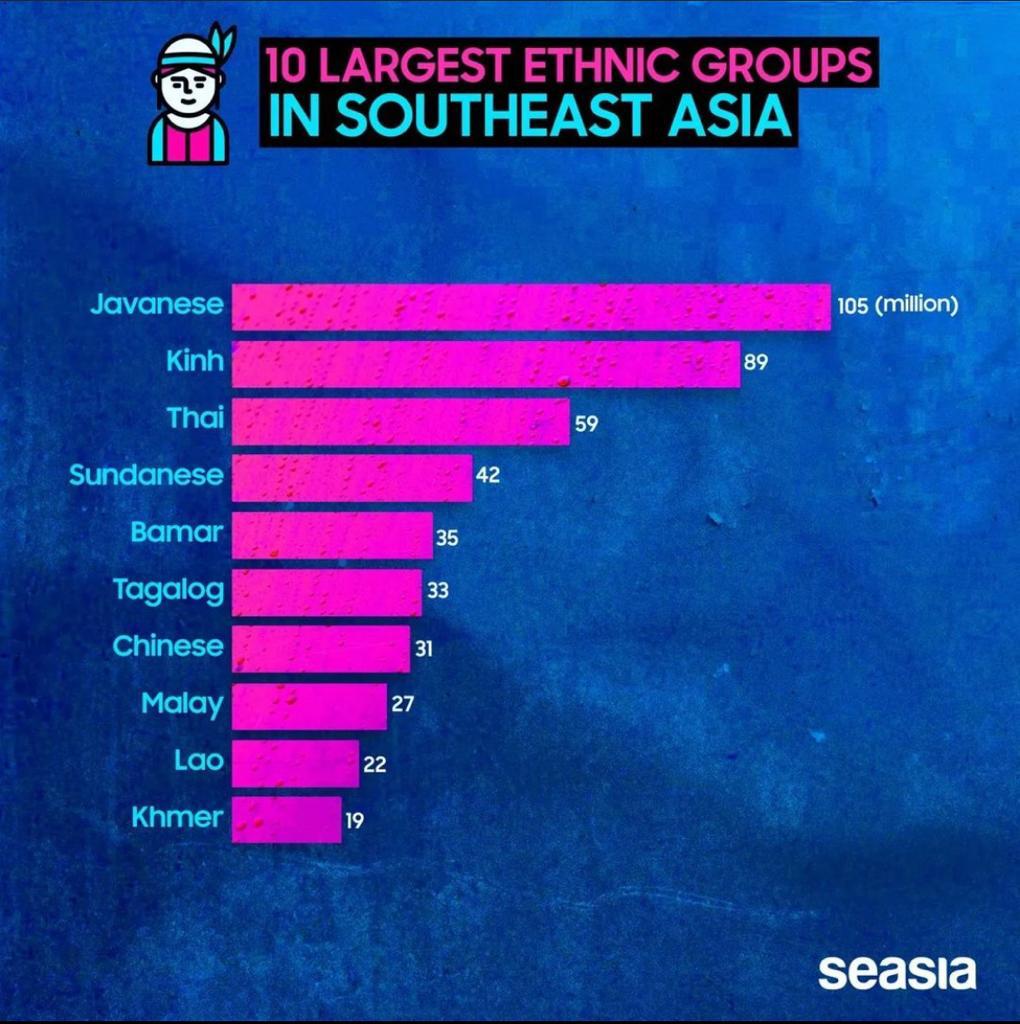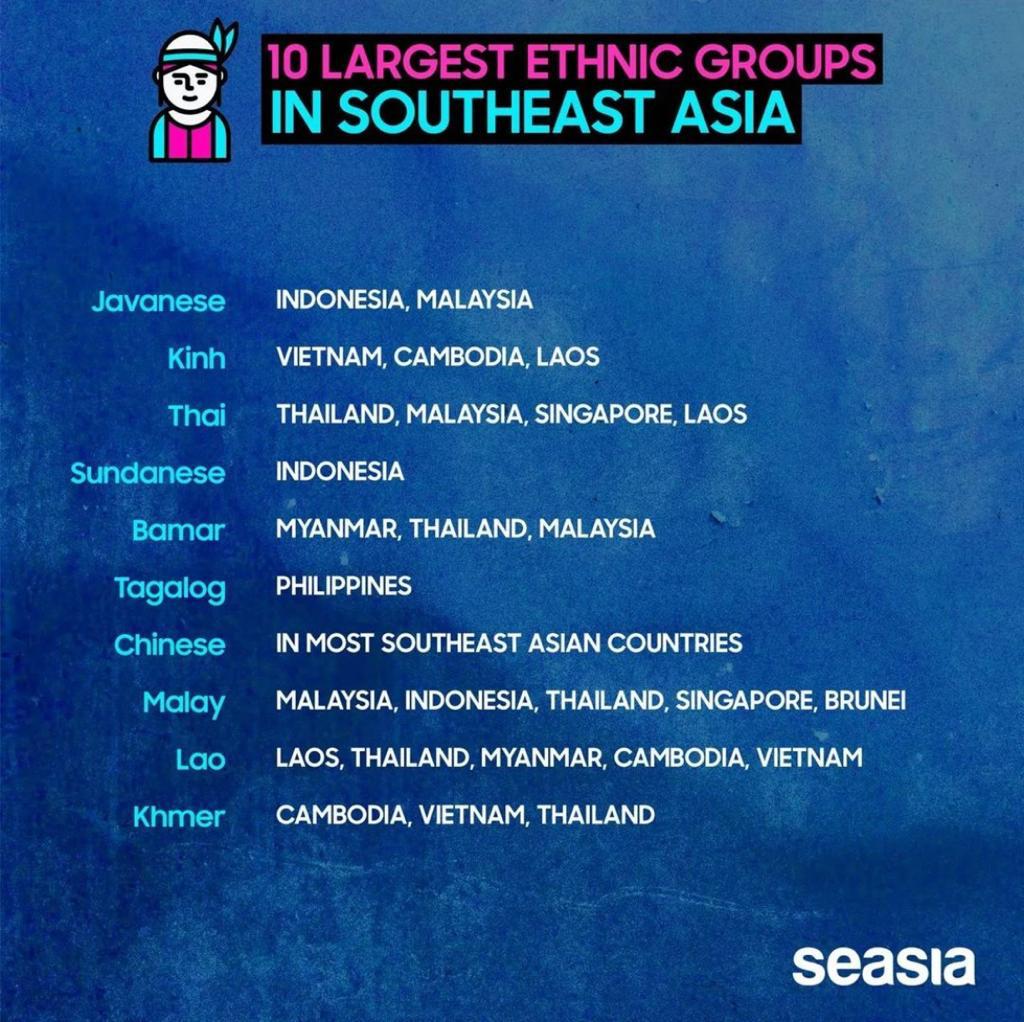Southeast Asia's population, which includes Indonesia and the Philippines, was close to half a billion by the late 20th century, or nearly 1 in 12 people on the planet. But there were disparities in the distribution of this population throughout the area.
With around two-fifths of the regional population, Indonesia had by far the greatest population; Brunei's population was only a small portion of that. Nearly half of the people in the region lived in the mainland states, with Vietnam and Thailand having the highest populations.

The population of Southeast Asia is made up of many different ethnic and cultural groupings. Due to its location at the intersection of land and water routes, it has a diverse population. Additionally, the area has alternatively served as a bridge and a barrier to the migration of people throughout human history.
Southeast Asia's population was brought there by a number of southerly migrations. The original inhabitants came from the interior of the Asian continent. These first settlers were driven out by subsequent movement, which led to the development of a complicated ethnic pattern.
The Khmer people of Cambodia still live on the mainland and are ancient Pareoean peoples' forefathers. Similar to Thailand, regions of Myanmar also have remains of the Mon ethnic group, which has been assimilated with the Tai, Lao, and Shan, Tibeto-Burman, and Tibeto-Burman peoples.

The Red River region in the north is where the modern Vietnamese population began, and it may have included a mix of Tai and Malay peoples. The Karens, Chins, and Ngas of Myanmar, who have relations to other Asiatic peoples, are added to these major ethnic groupings. These peoples are far less numerous than the other major ethnic groups.
The descendants of Proto-Malay (Nesiot) and Pareoean peoples, who were influenced by Malayo-Polynesian and other groups, can be found in insular Southeast Asia. Additionally, the ethnic makeup of the islands has been impacted by Arabic, Indian, and Chinese influences.
More than two thirds of Myanmar's ethnic population now is made up of Burmans, whereas Vietnamese and ethnic Thais make up roughly four fifths of each nation's ethnic populations.
In contrast to Malaysia, which is more evenly divided between the Malays and the Chinese, Indonesia is dominated by the Javanese and Sundanese ethnic groups. The Tagalog, Cebuano, Ilocano, and Bicol ethnic groups are important in the Philippines.
The main ethnic groups in Southeast Asia have complicated histories, and there are intricate interactions between them. The main language families of the Tai (the Thai of Thailand being the largest), the Mon-Khmer (the Khmer of Cambodia being the largest), the Hmong (of northern Laos and southern China), and the Vietnamese are all included in this affinity bloc.
While many smaller peoples have relocated and settled in the numerous less productive highlands, the Thai, Khmer, Lao, and Vietnamese all live in the rich lowlands.
Source: Britannica.com, PeopleGroups.com


















